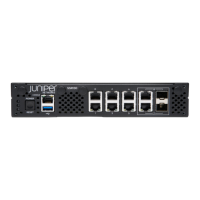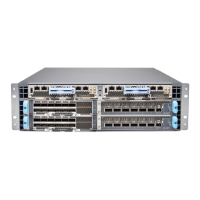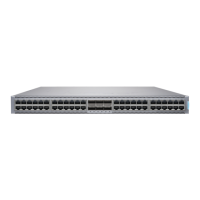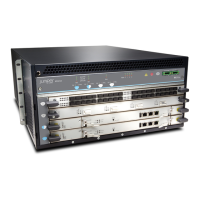NOTE: BITS input is a T1/E1 line interface unit (LIU), with AMI (alternate mark
inversion) encoding enabled and B8ZS/HDB3 (Zero Suppression) disabled.
The equalization is set for a 0-133 feet cable. An internal 100 ohm termination
is present, although it might need to be externally augmented based on the
type of cabling used. Any valid AMI signal works properly and it is not restricted
to only the "all 1" BITS signal but the ones density must be sufficient to prevent
LOS (according to the ITU G.775 recommendation). The TTL input has a slice
point of 3.3V/2 = 1.65V relative to chassis ground (GND). Therefore, any signal
on the coaxial center conductor that transitions through that voltage registers
a transition. There are many signals, besides TTL, that satisfy this criteria. An
external termination must be provided that matches the impedance of the
cable that goes to the BNC connector.
If you can configure the rate in CTP menu, then the TTL supports a frequency
of 2048 KHz for the TTL clock input, provided the signal is good and noise-free
(terminated properly). TTL is rate-agile, while BITS is restricted to T1/E1
frequencies.
The TTL input is high-impedance (no on-board termination provided) because
a variety of cable types might exist that you can use to drive signal to this
connector, such as RG-58 coax (50 ohm), RG-59 coax (75 ohm), or twisted
pair (100-120 ohm). Instead of applying a particular impedance termination
on the board and have it incorrectly done, we recommend that you configure
the impedance termination based on your network environment. For example,
a 50 ohm termination is needed if you are using RG-58/U coax cable, which
has 50 ohm impedance.
External Reference Clock
The CTP2000 device can receive the external reference clock from any of the following
inputs on the clock main module:
•
The DB-25 connector. The clock input is provided on pins 24 and 11.
•
The T1/E1 BITS inputs
•
The T1/E1 TTL input
Installation Notes for Clock Interface Modules
•
Main modules and spoke modules are not hot-swappable.
•
Nonvoice modules and voice modules can be installed in any slot.
•
Main clock RTMs must be installed in slot 0 behind either a serial module or a T1/E1
module.
•
Spoke RTMs must be installed behind serial modules and the lowest-numbered T1/E1
slot.
27Copyright © 2017, Juniper Networks, Inc.
Chapter 2: CTP2000 Series Interface Modules

